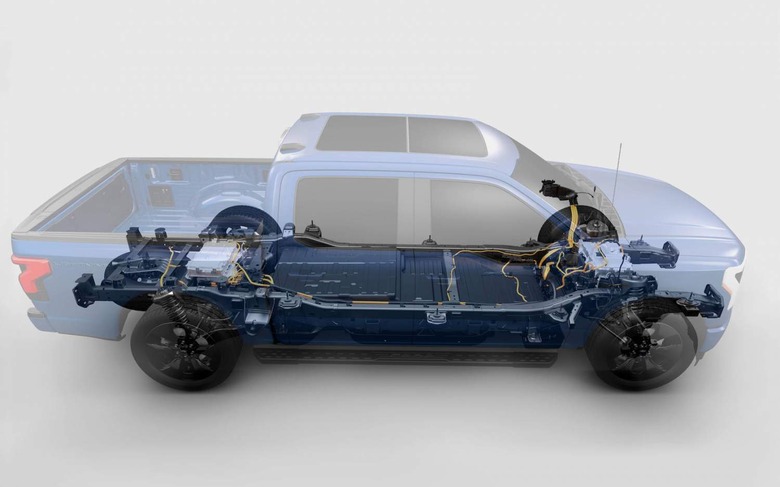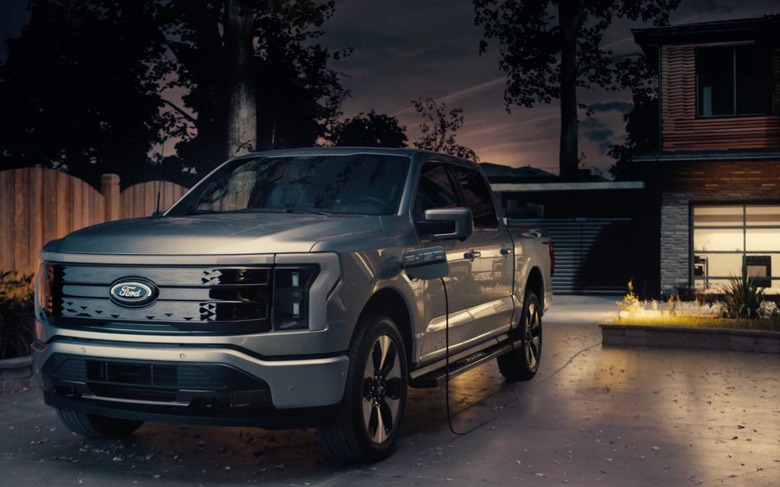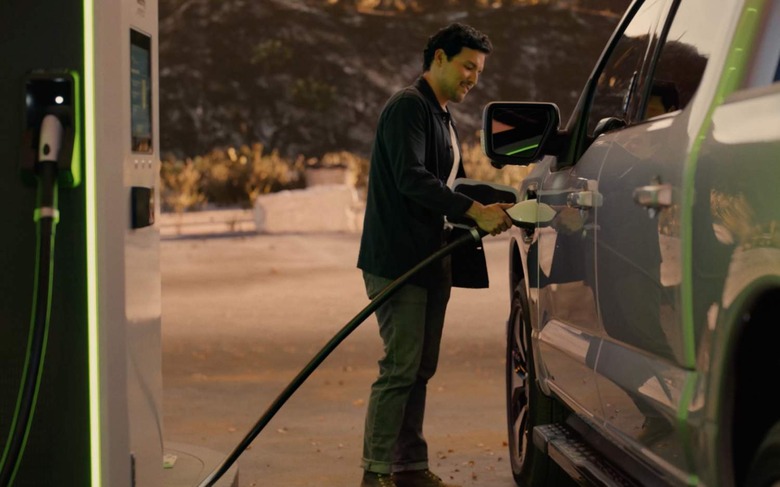Ford's F-150 Lightning could end America's addiction to the grid
With a 0-60 mph time expected in the mid-4.5-seconds, the 2022 Ford F-150 Lightning certainly won't be slow. Still, what could end up persuading truck buyers to give the electric pickup a chance might be how useful it is when it's standing still.
The single most expensive part of any electric vehicle is the battery pack. Ford is tapping some economies of scale to help make the F-150 Lightning a little more attainable, with plenty of parts similarity between the powertrain of the truck and the Mustang Mach-E electric crossover, for instance. That so-called catalog approach means Ford's engineers don't need to "recreate the wheel" every time they design a new EV.

Still, the reality is that for long periods the F-150 Lightning – like any vehicle – is going to be parked up. While that happens at home, it'll likely be plugged into a home charger, and that's where things get interesting. Ford's most ambitious push with its new EV truck is all about making maximum use of that expensive battery in more ways than just on the road.
Ford isn't installing its 80A Charge Station Pro itself
One of the challenges most automakers have faced with the gradual transition to EVs is making sure new owners have all the right parts in place. With a gas vehicle, you can point them in the direction of the nearest gas station. For most electric car owners, though, the majority of charging happens at home, and for that you really want a Level 2 charger.
Level 2 basically means it works with a 240V connection: the F-150 Lightning does come with a Ford Mobile Charger that will plug into a regular 110V outlet, but it'll be very slow going to keep your truck topped up that way. The same Mobile Charger will also work with a 240V outlet, but for the fastest charging – and most flexible use of the pickup – you'll want the 80A Charge Station Pro.
That comes standard with the Extended Range version of the EV, and is an option for the Standard Range model. It'll require professional installation, too, and there Ford has turned to Sunrun. It'll be the preferred installer for what Ford is calling Intelligent Backup Power.
Ford Intelligent Backup Power is more than just charging
Obviously, the 80A charger will recharge your F-150 Lightning. It'll do it rapidly, too: eight hours to charge the Extended Range version, from 15-percent to totally full. Ford's Mobile Charger would take about 19 hours to do the same.

However the charger also works in reverse. If the power in your home goes out – such as from a grid outage – then the Charge Station Pro can start pulling energy from the F-150 Lightning and using it to supply the house's needs instead. That's why it needs professional installation, so that it can be integrated with the home management system that Sunrun installs.
Ford says that, based on typical use, the Intelligent Backup Power system could keep a home running for three days. Scale back your power consumption, meanwhile, and you could extend that to up to 10 days, the automaker predicts.
Exactly how much that all costs, and how convoluted a process it is, remains to be seen. Sunrun tells SlashGear that it'll be sharing more details on the price of installation in the coming months. As for complexity, that'll depend in no small part on how your home electricity system is set up, and where your circuit box is. If you live in a relatively new home with up-to-date wiring, and your garage is near that breaker box, then the process will be much easier than if you need rewiring to deal with the sort of power involved in the whole system.
With solar, things get more interesting - and potentially cheaper
Sunrun's role won't end there, though. Ford and the company are also pushing solar power as a big advantage for F-150 Lightning owners, with the potential to have a system installed at the same time as the Charge Station Pro is fitted.

Again, how practical that is will depend on your home, your position in relation to daily sunlight, and of course your budget. Solar can be an expensive prospect, with initial costs in the tens of thousands depending on the project. Sunrun is also pushing the idea of a home battery, which effectively stores electricity generated by the solar panels and can then use it to power your home – or recharge your EV.
If the stars align, over the course of multiple years, solar can help offset mainstream electric costs significantly. In most areas you can sell power back into the grid, too, and of course rely on a home battery to tide you over during emergencies and outages such as those experienced in Texas earlier this year.
In the future, the F-150 Lightning will be even more integrated into your power
Ford's plan down the line for its electric truck, though, will see it even further integrated into your home power supply. Rather than just acting as an emergency battery, the F-150 Lightning's cells would be tapped more frequently. That's all in the name of working via the smart grid to avoid you paying peak energy charges.

Most people are resigned to the fact that, at some times of the day, their power company bills them more per kW for their energy supply. That's one of the reasons home power batteries are popular, since you can store electricity when it's cheap – or generated via solar – and then use it later on, when the grid rates are high. What Ford has in mind, though, is using the F-150 Lightning as that temporary battery.
With the update, the EV would act basically like a home battery only one that happens to be portable. When power is cheap, it'd charge up; when it's expensive, rather than paying peak power company prices, the home would automatically switch over to using the energy stored in your Ford. The whole process would be seamless, though you could see what was happening in the companion app.
If you need to use the truck, or the battery starts to run low, the system would switch back over – automatically or manually – to the grid supply. While this isn't the first implementation of so-called bidirectional power for the home, what could make the difference is that Ford is a mainstream player, and the F-150 is a hugely popular product.
Just as experiencing the instant torque of an EV for the first time can be enough to convince new converts, so too discovering how much money you could save with an EV doubling as a home battery might be sufficient to sway some otherwise-dedicated gas-lovers over to the electric side.
